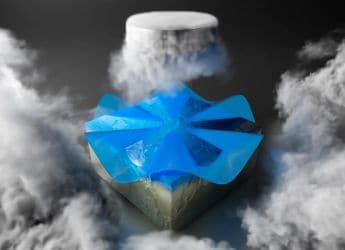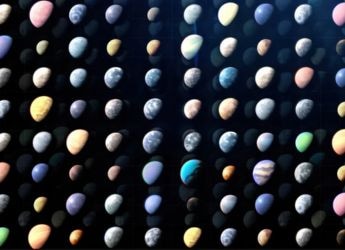- Home
- Science
- Science News
- James Webb Telescope Spots Planet Formation in Harshest Known Galactic Environments
James Webb Telescope Spots Planet Formation in Harshest Known Galactic Environments
JWST detects planet-forming disk in extreme radiation zones, challenging old planet-formation theories.

Photo Credit: NASA/Adriana Manrique Gutierrez
JWST reveals water and planetary birth in radiation-heavy disk 5,500 light-years away
Planets can even form in some of the most inhospitable parts of the galaxy – so says new data from the James Webb Space Telescope (JWST). While attempting to study the planets that may be forming within one of the Milky Way's most UV-rich star-forming regions, astronomers learnt that a planet-forming disk (dubbed XUE 1) has in fact been able to survive, despite extreme ultraviolet (UV) lightning that was once thought to be too harsh to allow planetary formation. The results expand the address in the universe where Earth-like planets may spawn.
Webb Telescope Detects Water in Planet-Forming Disk Exposed to Extreme UV Radiation in Deep Space
As per a report published in The Astrophysical Journal on May 20, XUE 1 orbits a young star in a region bombarded by UV radiation thousands of times more intense than what Earth's solar system has ever experienced. Researchers from Penn State and the Max Planck Institute observed the far-flung disk, at a distance of 5,500 light-years with JWST's Mid-Infrared Instrument (MIRI). Thermochemical modelling of the data established fundamental disk properties such as the temperature, density, and chemical composition of the gas.
Most remarkably, the mini disk contained water molecules — a key ingredient for life — despite the harsh radiation. The disk's inner regions, including where hard, rocky planets like Earth might form, are seemingly shielded from the dangerous UV radiation bombarding the outer layers, according to the researchers. This safe zone could enable Earth-like worlds to form in places long believed unlikely.
The JWST-based model used synthetic spectra to compare with observed data and uncover the chemical behaviour of the disk material. Before these observations, scientists expected such environments to be too disruptive for planet formation. But the new data paints another picture, showing that planet-forming disks may, in fact, persist and even prosper in UV-rich surroundings.
The finding revamps astronomers' view of how planets form and opens new possibilities in the search for habitable worlds. Scientists now suspect that not even extreme star-forming zones may be as deadly as they appeared to be. With more JWST research ahead, these cosmic nurseries may hold even more surprises — and more hope of finding Earth-like planets in other parts of the universe.
Get your daily dose of tech news, reviews, and insights, in under 80 characters on Gadgets 360 Turbo. Connect with fellow tech lovers on our Forum. Follow us on X, Facebook, WhatsApp, Threads and Google News for instant updates. Catch all the action on our YouTube channel.
Related Stories
- Samsung Galaxy Unpacked 2025
- ChatGPT
- Redmi Note 14 Pro+
- iPhone 16
- Apple Vision Pro
- Oneplus 12
- OnePlus Nord CE 3 Lite 5G
- iPhone 13
- Xiaomi 14 Pro
- Oppo Find N3
- Tecno Spark Go (2023)
- Realme V30
- Best Phones Under 25000
- Samsung Galaxy S24 Series
- Cryptocurrency
- iQoo 12
- Samsung Galaxy S24 Ultra
- Giottus
- Samsung Galaxy Z Flip 5
- Apple 'Scary Fast'
- Housefull 5
- GoPro Hero 12 Black Review
- Invincible Season 2
- JioGlass
- HD Ready TV
- Laptop Under 50000
- Smartwatch Under 10000
- Latest Mobile Phones
- Compare Phones
- Honor Win RT
- Honor Win
- Xiaomi 17 Ultra Leica Edition
- Xiaomi 17 Ultra
- Huawei Nova 15
- Huawei Nova 15 Pro
- Huawei Nova 15 Ultra
- OnePlus 15R
- Asus ProArt P16
- MacBook Pro 14-inch (M5, 2025)
- OPPO Pad Air 5
- Huawei MatePad 11.5 (2026)
- Xiaomi Watch 5
- Huawei Watch 10th Anniversary Edition
- Acerpure Nitro Z Series 100-inch QLED TV
- Samsung 43 Inch LED Ultra HD (4K) Smart TV (UA43UE81AFULXL)
- Asus ROG Ally
- Nintendo Switch Lite
- Haier 1.6 Ton 5 Star Inverter Split AC (HSU19G-MZAID5BN-INV)
- Haier 1.6 Ton 5 Star Inverter Split AC (HSU19G-MZAIM5BN-INV)

















